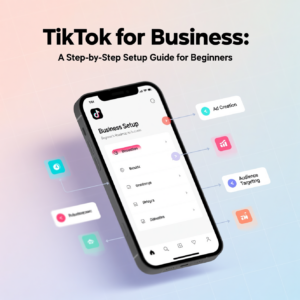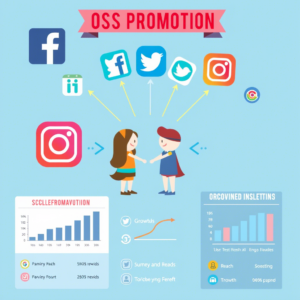Imagine this: You’ve spent countless hours crafting blog posts, creating guides, and publishing articles. But over time, some of these pieces have been forgotten—buried in the depths of your website, collecting virtual dust. What if I told you that these neglected posts could still be valuable? With a little effort, they can drive significant organic traffic and even outrank newer content.
In today’s competitive digital landscape, simply publishing new content isn’t enough. Search engines like Google reward websites that consistently provide high-quality, up-to-date information.
This is where auditing and revamping old content comes into play. By revisiting and refreshing outdated or underperforming articles, you can breathe new life into them, boost their search engine rankings, and attract more visitors to your site.
This article will guide you through the process of auditing your existing content, identifying opportunities for improvement, and implementing actionable strategies to enhance its performance. Whether you’re a seasoned marketer or just starting out, you’ll discover practical tips to make the most of your content library. Let’s dive in!
1. Conducting a Comprehensive Content Audit
Before you can revamp your old content, you need to know what you’re working with. A content audit is the first step in this process. It involves analyzing all the content on your website to determine what’s performing well, what’s underperforming, and what needs to be updated.
Why Perform a Content Audit?
A content audit helps you understand the current state of your website. Are there pages that are driving traffic but could perform better? Are there articles that are outdated or irrelevant? Identifying these issues allows you to prioritize your efforts effectively.
Steps to Conduct an Audit
Inventory Your Content : Create a spreadsheet listing all your blog posts, articles, and landing pages. Include details such as URLs, publication dates, word count, and traffic metrics.
Analyze Performance Metrics : Use tools like Google Analytics and Google Search Console to assess page views, bounce rates, keyword rankings, and backlinks.
Categorize Your Content : Divide your content into categories such as “Performing Well,” “Needs Improvement,” and “Outdated/Remove.” This will help you focus on areas with the highest potential ROI.
Tools to Simplify the Process
- Google Analytics : Tracks traffic and user behavior.
- SEMrush or Ahrefs : Provides insights into keyword rankings and backlinks.
- Screaming Frog : Crawls your website to identify technical SEO issues.
By conducting a thorough audit, you’ll gain a clear understanding of which pieces of content are worth revamping and which ones should be retired.
2. Updating Outdated Information
One of the most common reasons why old content loses its relevance is outdated information. Whether it’s outdated statistics, broken links, or references to obsolete trends, these issues can harm your credibility and SEO performance.
Why Update Outdated Content?
Search engines prioritize fresh, accurate, and relevant content. If your article contains outdated facts or figures, it’s unlikely to rank well. Additionally, readers may lose trust in your brand if they encounter incorrect or irrelevant information.
How to Refresh Your Content
Research Current Trends : Look for the latest industry news, studies, and data to replace outdated information.
Fix Broken Links : Check for broken internal and external links and replace them with functioning ones.
Add New Sections : Expand on existing topics by adding new subtopics, examples, or case studies.
Optimize for Keywords : Incorporate trending keywords related to your topic while maintaining a natural flow.
For example, if you wrote an article about social media marketing in 2018, consider updating it to include recent platform updates, algorithm changes, and emerging trends like TikTok marketing.
Updating your content not only improves its accuracy but also signals to search engines that your website is actively maintained—a key factor in ranking algorithms.
3. Enhancing On-Page SEO Elements
Even if your content is well-written and up-to-date, poor on-page SEO can prevent it from reaching its full potential. Optimizing meta tags, headings, and images can significantly improve your article’s visibility in search results.
Key On-Page SEO Elements to Focus On
Meta Titles and Descriptions : Ensure your titles are compelling and include target keywords. Write meta descriptions that entice users to click through.
Header Tags (H1, H2, H3) : Organize your content using proper header tags. This makes it easier for both readers and search engines to navigate.
Image Optimization : Compress images to reduce load times and add descriptive alt text for accessibility and SEO.
Internal Linking : Link to other relevant articles on your site to improve navigation and distribute link equity.
Practical Example
Suppose you’re revamping a blog post about email marketing. You could:
- Rewrite the meta title to include a primary keyword, such as “Top Email Marketing Strategies for 2023.”
- Add H2 headings like “Best Practices for Subject Lines” and “How to Boost Open Rates.”
- Replace low-quality images with visually appealing infographics or charts.
These small tweaks can make a big difference in how your content performs organically.
4. Improving User Experience (UX)
User experience plays a critical role in determining whether visitors stay on your page or leave immediately. Even if your content is informative, a poor UX can lead to high bounce rates and lower rankings.
Ways to Enhance UX
Mobile Optimization : Ensure your content looks great on mobile devices. Use responsive design and test loading speeds.
Readable Formatting : Break up long paragraphs into shorter ones. Use bullet points, numbered lists, and bold text to highlight key points.
Engaging Multimedia : Incorporate videos, GIFs, or interactive elements to keep readers engaged.
Clear Call-to-Actions (CTAs) : Guide users toward the next step, whether it’s subscribing to a newsletter, downloading a resource, or exploring another article.
Real-World Impact
Consider a health blog that revamped an old article about fitness tips. By adding workout videos, creating a downloadable PDF checklist, and improving mobile responsiveness, the author saw a 40% increase in average session duration and a 25% drop in bounce rate.
Focusing on UX ensures that your content not only attracts visitors but also keeps them engaged and encourages them to take action.
5. Repurposing Content for Maximum Reach
Repurposing is a powerful strategy for getting more mileage out of your existing content. Instead of letting old articles sit idle, transform them into different formats to reach new audiences.
Benefits of Repurposing
Reaches Diverse Audiences : Not everyone consumes content the same way. Some prefer reading, while others enjoy watching videos or listening to podcasts.
Saves Time and Resources : Repurposing requires less effort than creating entirely new content.
Boosts Authority : Sharing consistent messages across multiple platforms reinforces your expertise.
Ideas for Repurposing
Turn Blog Posts into Videos : Create YouTube tutorials or Instagram Reels based on your written content.
Develop Infographics : Visualize key points from your articles to share on social media.
Write Ebooks or Guides : Compile related blog posts into a comprehensive resource.
Host Webinars : Use your content as the foundation for live presentations or Q&A sessions.
For instance, a travel blogger could repurpose a series of destination guides into a podcast episode or a Pinterest board featuring stunning visuals.
Repurposing not only extends the lifespan of your content but also amplifies its impact across various channels.
Conclusion: Unlock the Hidden Potential of Your Content
Revamping old content is a smart and cost-effective way to boost your website’s organic performance. By conducting a content audit, updating outdated information, enhancing on-page SEO, improving user experience, and repurposing your work, you can unlock the hidden potential of your existing library.
Remember, the goal isn’t just to chase higher rankings—it’s to provide value to your audience. When you prioritize quality and relevance, both search engines and readers will reward you with increased traffic and engagement.
Now it’s your turn! Take a closer look at your content library and identify one piece that could benefit from a refresh. Share your progress in the comments below or let us know which strategy you found most helpful. Together, we can create content that stands the test of time.



